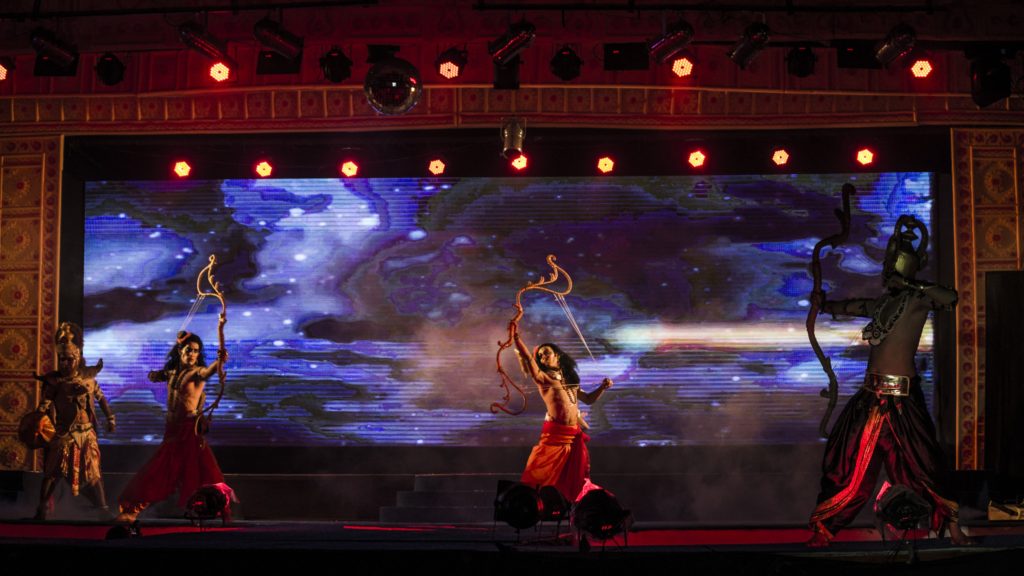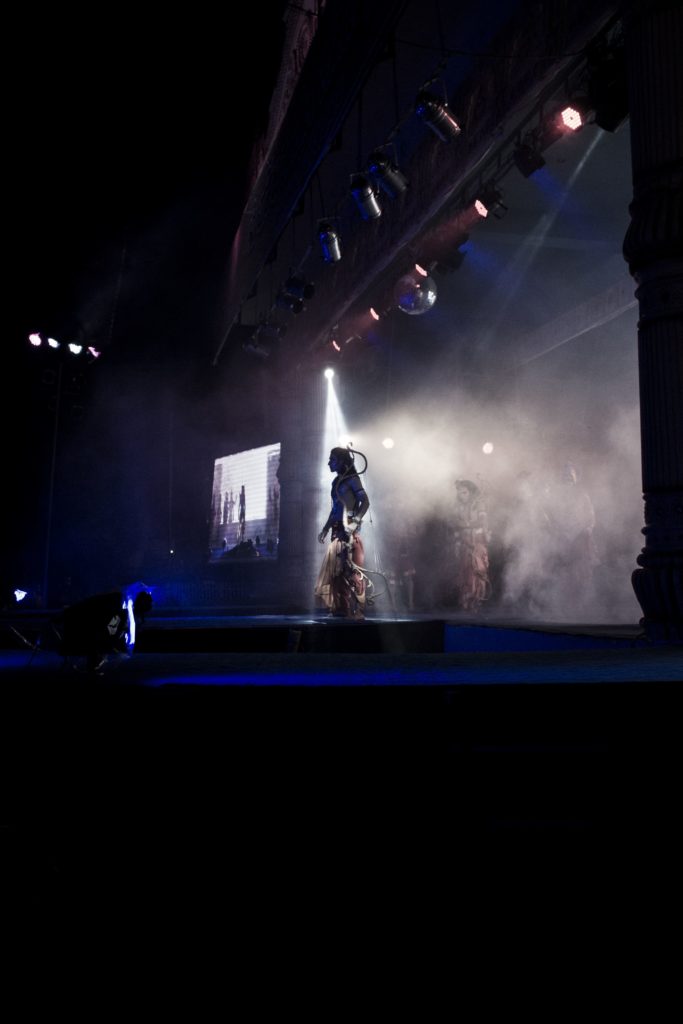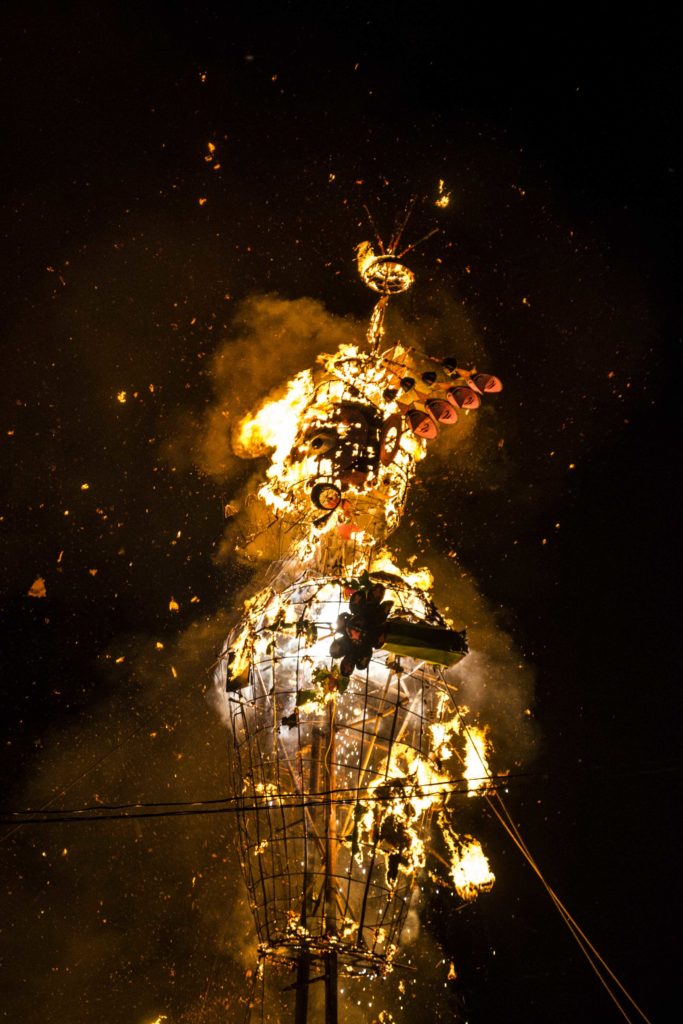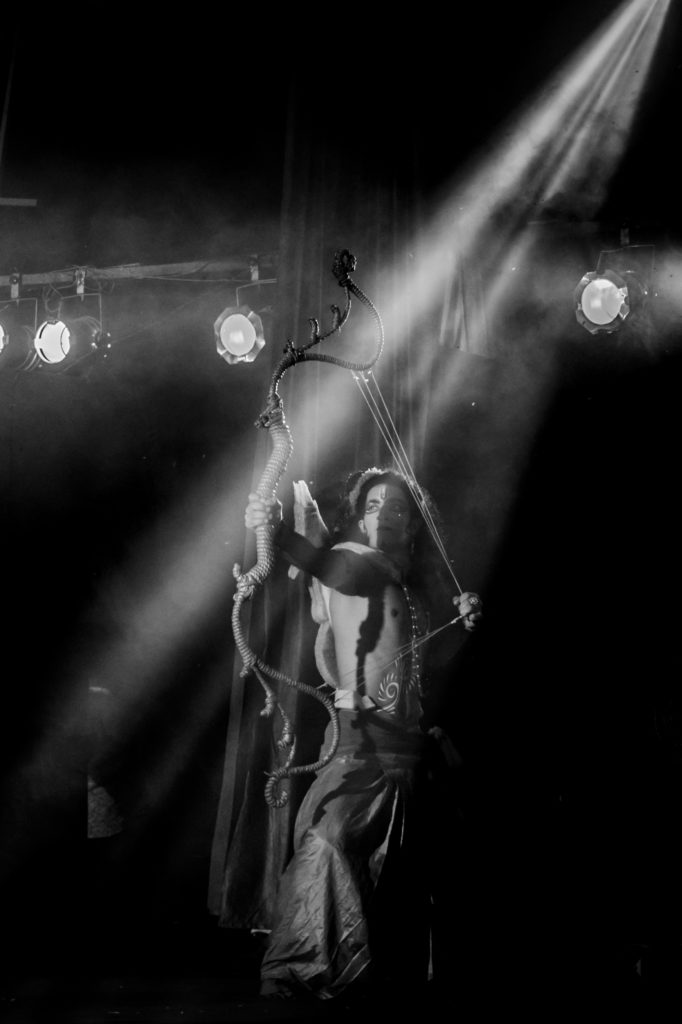
Anyone growing up during the 1980s in India would remember the Ramayana telecast on Doordarshan every Sunday. The epic was foregrounded in middle class consciousness by the popular series directed by Ramananda Sagar. The faithful would congregate before a TV screen after taking a bath and applying a tilak to the TV set. The TV show became a weekly ritual of sorts for an entire nation, bringing everything to a halt on Sunday mornings. Some would argue that the serial contributed to the emergence of a unified Hindu consciousness, presenting Ram as a dominant Hindu deity and introducing a congregational aspect to a loosely organized faith. This consciousness was capitalized on by the Ramjanmabhoomi movement which turned Ram into its muscular mascot, paving the way for the rise of Hindutva and the BJP. Such was the popularity of the television Ramayana that sanitation workers in Jalandhar went on strike when the serial was about to end without depicting the events of the seventh and the final book. The dominance of Ramananda Sagar’s televised Ramayana meant that most Indians tended to be ignorant about the richness and diversity of the Ramayana tradition.

The majoritarian narrative of the Ramayana is usually associated with the versions of Valmiki and Tulsidas where Ram is portrayed as the epitome of heroic virtue and Ravana is painted villainous. According to the art historian Gauri Parimoo Krishnan, the canonical status often ascribed to Valmiki’s version has given rise to ‘a patriarchal, literate and pan Indian elitism.’ There in fact exist great divergences in the regional retellings/versions of the epic. In the Jataka version Ram and Sita are siblings, in the Jaina version it is Lakshmana who kills Ravana because Ram is a Jaina hero who upholds the Jaina principle of ahimsa or non-violence, in the Thai retelling Hanuman is not the bachelor devotee of Ram that he is presented in Valmiki’s version and in the Kannada folk version Ravana is Sita’s father while in tribal versions particularly the Santhali one we see a bolder Sita. Whereas in Sanskrit sita means furrow in Kannada it means sneeze taking cue from the Kannada folk version of the epic where Sita is born from the sneeze of Ravana known as Ravula. Not only do the characters undergo a dramatic transformation in the numerous versions even the plot changes. In the Bhil version for example there is no war at all because the Bhils don’t believe in violence.

The epic even lends itself as a vehicle for political protest, its appropriation by the Dravidian movement being a case in point. EV Ramasawami’s reading of the Ramayana was one of Aryan domination over Dravidian culture, he presents Rama as an agent of North Indian oppression and Ravana as a Dravidian hero. He thus offers a radical reinterpretation of the epic to serve the Dravidian cause of anti-Brahminism and resistance to North Indian political and cultural domination. From questioning patriarchy and echoing the daily concerns and woes of Telugu Brahmin women rendered in songs which foreground Sita to the erotic Ram of the rasika tradition, the diversity of the narrative tradition, its multiple tellings and retellings are a testament to its democratic ethos. The narrative tradition even adapts itself to the ecological features of its place of composition as is the case in Kampan’s Iramavtaram. Not only is the epic great literature in itself but it has also inspired works of great literature. Miachel Madhusudan Dutt’s Meghanadvadhkavya for example which was published in 1861 is a Bengali poem retelling in 9 cantos an episode from the Ramayana, focussing on Ravana’s son Meghnada and his fight in the defence of the rakashas clan.
The multiplicity and diversity of tellings and retellings of this epic is also matched by a multiplicity of audiences in certain cases. As Stuart Balckburn points out in the Kerala shadow puppet play version which adapts Kampan’s Iramavtaram in Malayalam folk context there is an internal audience which exists, with the puppeteers constituting an audience in themselves through ‘commentary, chanting verses, and by manipulating puppets they constantly interact with each other and respond to jokes and jibes.’

The erotic and sensuous Ram of the rasika sampradya is so different from the masculine and muscular Ram who became a Hindutva mascot and the diversity of this narrative tradition in fact serves as an antidote to the homogenizing influence of Hindutva. Faced with the onslaught of an ideology which seeks to reduce the hero of this great epic tradition into a communal icon we must remind ourselves of the pluralism of the many Ramanyas.
Author: Madhav Nayar


This was such an enriching article bringing out the different shades of our culture. A good read. I had a question…….can we personally contribute an article if we wish to this project?